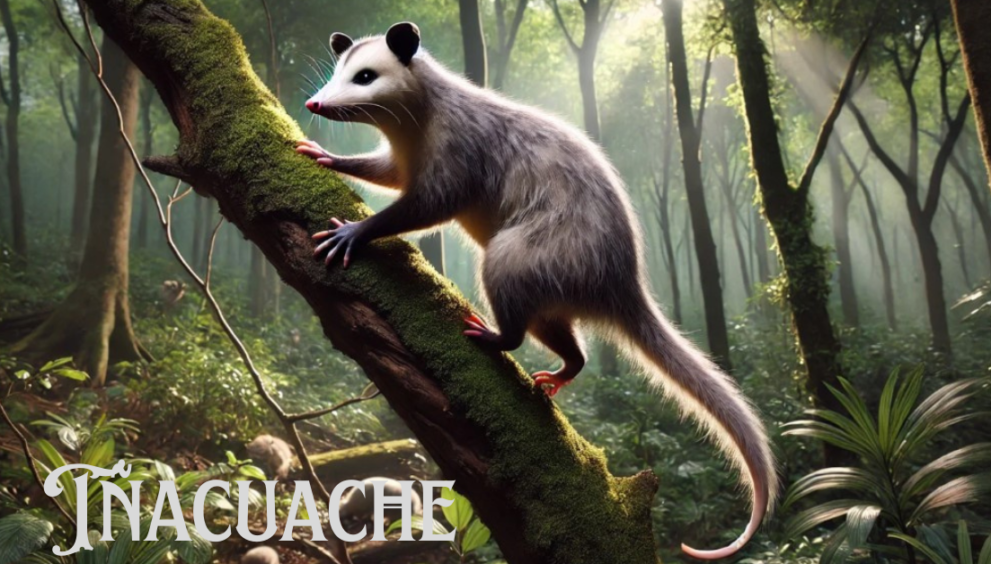Tñacuache The Fascinating Life of the Mexican Opossum

The Tñacuache, also known as the Mexican opossum, is a fascinating animal that has captured the interest and imagination of many people, especially in Central America and Mexico. Though it may resemble a typical opossum at first glance, the Tñacuache has its own unique characteristics, cultural significance, and role in the ecosystem. This article will explore the intriguing world of the Tñacuache, shedding light on its habits, habitat, relationship with humans, and why this creature has become a symbol in various cultural stories.
Whether you’re an animal enthusiast or just curious about one of nature’s misunderstood creatures, the Tñacuache offers an exciting glimpse into wildlife that thrives on adaptability and resilience.
What is a Tñacuache?
The Tñacuache (pronounced tay-nah-kwa-chay) is a member of the opossum family, specifically known as the Mexican opossum. It is a marsupial, which means that females have a pouch where they carry and nurse their young. The species is part of the Didelphidae family and is one of the oldest surviving groups of mammals, having existed for over 60 million years. This resilient creature has adapted to various environments, from forests and rural areas to urban settings.
Physical Characteristics of Tñacuache
The Tñacuache typically has a grayish body with a white face and a long, prehensile tail that it uses for balance, climbing, and sometimes even carrying objects. It can grow up to 40 inches in length, including its tail, and weighs around 4 to 12 pounds depending on its environment and diet. One of its most defining features is its sharp set of 50 teeth, which it uses for its omnivorous diet.
Despite its somewhat intimidating appearance, the Tñacuache is generally a shy and non-aggressive animal. It uses its teeth mostly to feed, but when threatened, it has a unique defense mechanism: it “plays dead” or “plays possum.” This involuntary response can last several minutes and is an effective way to deter predators.
Habitat and Behavior of Tñacuache
The Tñacuache is native to Mexico and Central America but has also been spotted in parts of the southern United States. Its habitat varies greatly, ranging from forests to agricultural lands and even suburban backyards. This adaptability has allowed the Tñacuache to thrive despite increasing urbanization and environmental changes.
Nocturnal Lifestyle
One of the most distinctive behavioral traits of the Tñacuache is its nocturnal nature. It is most active at night, foraging for food and moving through its territory. During the day, the Tñacuache typically finds shelter in hollow trees, burrows, or even man-made structures like attics and sheds.
Their solitary nature means they don’t usually form groups, and they are quite territorial. However, during mating season, males and females come together briefly to reproduce, after which the female raises the young on her own.
The Diet of a Tñacuache
Tñacuaches are omnivores, meaning they eat a wide variety of foods, both plant and animal-based. This diet flexibility is another reason for their success in different environments.
What Do They Eat?
- Insects: Beetles, crickets, and other insects form a major part of their diet.
- Small animals: They occasionally hunt small mammals, birds, and reptiles.
- Fruits and Vegetables: Tñacuaches enjoy eating fruits like berries, figs, and other produce they find in forests or even gardens.
- Carrion: Like many scavengers, they are not picky about eating the remains of dead animals.
- Human food: In urban areas, they are often seen rummaging through trash cans in search of food scraps.
This opportunistic feeding behavior ensures that Tñacuaches can survive even in resource-scarce environments.
The Tñacuache in Mexican Culture
The Tñacuache holds a special place in Mexican folklore and tradition. In many indigenous stories, the Tñacuache is portrayed as a trickster figure, outsmarting other animals and even humans to get what it wants.
A Symbol of Resourcefulness
One of the most famous tales involving the Tñacuache is the story of how it brought fire to humanity. According to this legend, the Tñacuache saw that humans were cold and suffering, so it snuck into the gods’ domain, stole fire, and brought it back to Earth by hiding it in its tail.
This tale has cemented the Tñacuache’s role as a symbol of resourcefulness and cunning in Mexican culture, teaching lessons about resilience, survival, and cleverness.
Ecological Role of the Tñacuache
Despite often being viewed as a nuisance in urban settings, the Tñacuache plays a crucial role in the ecosystem. Its varied diet means it helps control insect populations, particularly pests that could harm crops and gardens. Furthermore, by eating carrion and other decaying matter, the Tñacuache acts as a natural cleaner, preventing the spread of diseases.
Seed Disperser
Because the Tñacuache consumes a wide range of fruits, it also helps in seed dispersal. As it moves through its habitat, it scatters seeds, contributing to plant growth and forest regeneration. This indirect contribution to plant biodiversity makes the Tñacuache an important part of its ecosystem, even if its role often goes unnoticed.
Threats to the Tñacuache
While the Tñacuache has proven to be a resilient species, it faces a number of threats due to habitat destruction, human encroachment, and climate change.
Urbanization and Habitat Loss
As cities expand and forests shrink, the natural habitat of the Tñacuache is increasingly under threat. Though they have adapted to urban environments, this transition comes with risks such as vehicle collisions, poisoning from chemicals or pesticides, and interactions with domestic pets.
Climate Change
Changes in climate also pose a significant risk to the Tñacuache. Droughts, changes in vegetation, and extreme weather events can disrupt their food supply and nesting areas. While the Tñacuache has shown adaptability, ongoing climate changes may prove too rapid for some populations to adjust to.
Misunderstandings and Misconceptions About the Tñacuache
People often misunderstand and unfairly label the Tñacuache as a pest, especially in urban areas where it rummages through garbage. Although it may be attracted to human food waste, this animal is not aggressive and poses little threat to humans.
Common Misconceptions
- Disease carriers: One common myth is that Tñacuaches carry diseases like rabies. However, due to their low body temperature, they are less likely to carry rabies compared to other mammals. While all wild animals should be approached with caution, the Tñacuache is not the dangerous, disease-ridden creature some believe it to be.
- Aggressiveness: When cornered, the Tñacuache may hiss or growl as a defense mechanism, but they rarely attack. More often, they rely on their “playing dead” tactic to escape danger.
By dispelling these myths, we can help promote coexistence between humans and this misunderstood marsupial.
How to Live in Harmony with Tñacuaches
If you live in an area where Tñacuaches are common, there are simple ways to live harmoniously with these animals without having to resort to harmful traps or poisons.
Tips for Coexistence
- Secure Garbage: Tñacuaches are attracted to easy food sources, so securing trash cans with lids can help keep them away.
- Remove Pet Food: If you leave pet food outside, it could attract Tñacuaches. Try feeding pets indoors to avoid unwanted visitors.
- Provide Natural Shelters: If you have a garden, creating natural shelters with logs or brush can give Tñacuaches a safe place to nest away from human structures.
- Be Respectful: Remember, Tñacuaches are a part of the natural ecosystem. Avoid disturbing them unnecessarily and allow them to play their role in the environment.
The Future of the Tñacuache
Despite the challenges it faces, the Tñacuache remains a symbol of resilience and adaptability. Conservation efforts and increased public awareness can help ensure that this unique creature continues to thrive in both rural and urban environments.
Conservation Efforts
Several wildlife organizations are working to protect the habitats of marsupials like the Tñacuache. By promoting sustainable urban development and preserving forested areas, we can help maintain the delicate balance of ecosystems where these animals live.
Conclusion: A Misunderstood Marvel
The Tñacuache may not have the grandeur of larger animals, but it certainly deserves recognition for its adaptability, resourcefulness, and cultural significance. From its role in ancient folklore to its place in modern ecosystems, the Tñacuache is a testament to the diversity and wonder of the natural world.







